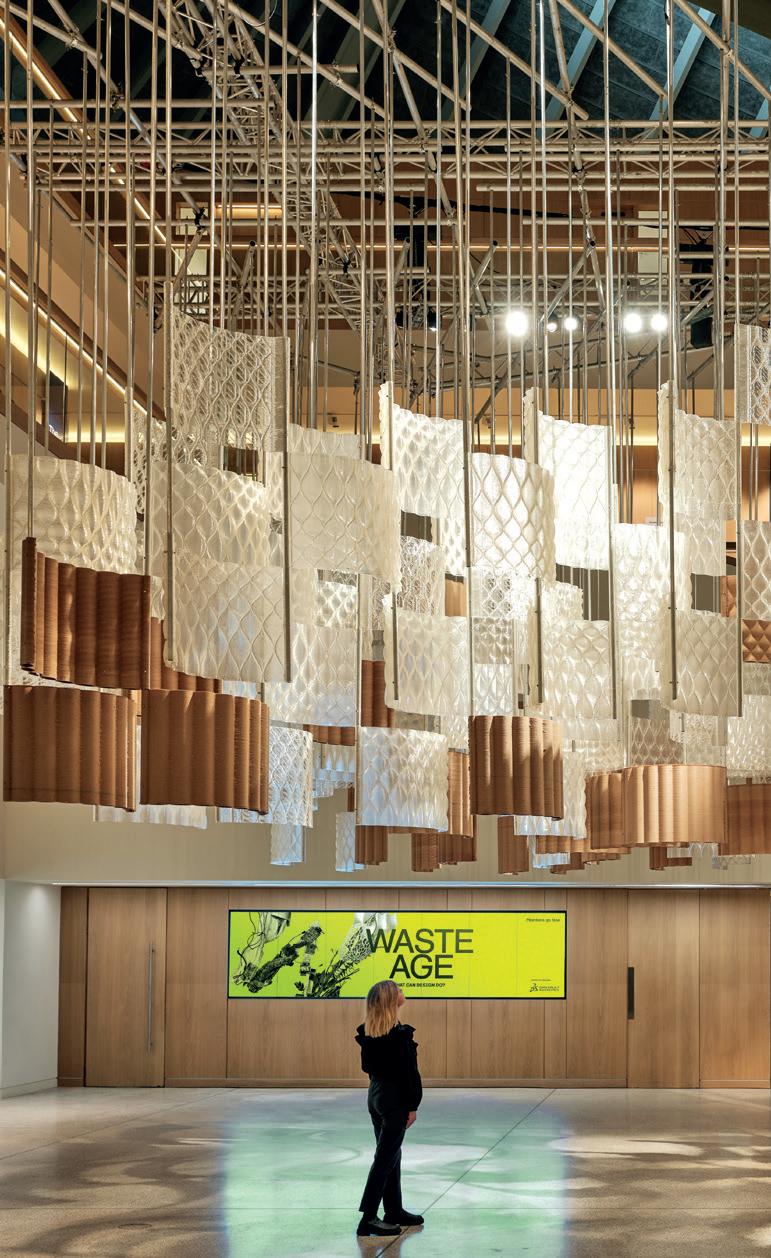state of the industry
AM AND THE YEAR AHEAD Head of Content Laura Griffiths asks AM experts what’s in store for 2022.
P
ersonal resolutions, however ambitious or misguided, are standard for a January. Mine was to read a new book every week (don’t be too impressed, the second was ticked off by Britney Spears’ unofficial biography). For industry, however, January tends to be about predicting trends for the coming year, and after the two we’ve all just had, it’s good to look to the future with a big dollop of optimism. If there’s one topic that has reigned supreme following accelerated conversations throughout 2020, it’s supply chain. After AM vendors and end-users rushed to answer calls around PPE shortages and other pandemicimpacted supplies, the question since has been whether AM’s role in alleviating those problems would just be another short-lived spike on the 3D printing hype cycle or if the goodwill earned by the technology during those times of crisis would have a long-term impact. “In the second stage of the pandemic, and now in 2022, society has become more aware of the enormous social contribution of our technology - industries have seen how we can improve processes and reduce costs with our 3D printers in production lines,” Xavier Martínez Faneca, CEO at BCN3D, told TCT. “I think this situation is exceptional and transitory, and through this experience, we have all realised that it does not make sense to be producing in distant locations but that local manufacturing should instead become the norm.” Recent figures from market intelligence company CONTEXT suggest that this renewed interest in 3D printing is here to stay. Figures show a tangible impact on machine orders, and CONTEXT reports that 'almost all major vendors' at last year’s Formnext said 'new and renewed interest in 3D printing was a consequence of global supply-chain problems.' While work from home scenarios saw a surge in desktop machine
purchases in 2020, one machine segment that has remained strong throughout is the Professional class (categorised as those priced between 2,500-20,000 USD). Shipments were up not only on the previous year but +13% higher than in the same period pre-Covid, which CONTEXT believes has been driven by the launch of new products, namely lower-cost SLS machines like Formlabs’ Fuse 1. Kathy Bui, Product Lead, Engineering Business at Formlabs, commented: “In 2022, we will continue to see AM play a role in the supply chain with 3D printers becoming a manufacturer’s Swiss army knife, an adaptable tool that can keep production lines running. With in-house industrial grade 3D printers, manufacturers can fortify their business against supply chain challenges and mitigate risk rather than replacing traditional manufacturing processes. 3D printers will be used as a risk mitigation tool rather than replacing traditional manufacturing processes.” That said, the same report cautions while 3D printer shipments are on the up, the industry’s own production lines have been thwarted by the very supply chain disruptions it aims to solve. Order rates show demand is there but due to shortages in certain printer components, like many in-demand consumer-facing items from cars to PlayStation 5s, the supply chain can’t keep up. But that doesn’t mean AM can’t be an asset elsewhere, as Oliver Smith, Founder and Principal Consultant at Rethink Additive, suggests: “For every story of 3D printed rockets, there are a thousand examples of 3D printing
producing the “boring” stuff that keeps a line moving, an operator comfortable or a parts bin stocked. “Going into 2022 and beyond, expect a shift in messaging from vendors and enquiries by users from 3D printing as a production solution, towards 3D printing as a productions support solution, able to rapidly provide the “boring” components and widgets needed to keep your operations and shop floor processes moving. COVID has made “boring” cool.” That AM can’t solve all supply chain problems, not even its own, emphasises how AM adoption needs the right applications. 3D Systems, for example, has been exploring AM’s role in semiconductor capital equipment, an area the company’s CEO Dr Jeffrey Graves believes AM’s ability to facilitate “exotic machine components” will help “improve efficiencies by simultaneously producing numerous unique, end-use parts.”
30.1 / www.tctmagazine.com / 011






